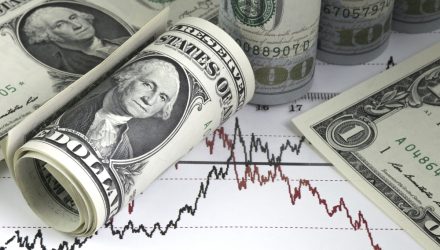It’s not a stretch to say a generation, perhaps two, of investors are hardwired to believe technology isn’t the sector dividends investors should embrace. However, that scenario has markedly improved in recent years.
Indeed, exchange traded funds such as the Invesco QQQ Trust (QQQ) and the Invesco NASDAQ 100 ETF (QQQM) sport tiny dividend yields. Yet that belies impressive dividend growth among tech stocks (nearly half of those ETFs’ rosters). In dollar terms, technology is now the largest dividend-paying sector in the S&P 500.
That’s good news for QQQ and QQQM investors. The “cohort of companies that make a long-term decision to pay an annually recurring dividend [is what would lead]to longer-term appreciation, inclusion in large cap indexes (survivorship bias), and lower volatility during market downturns,” said Morgan Stanley in its newly released 2023 Dividend Playbook.
More Reasons to Consider QQQ, QQQM Dividends Potency
In the 2023 Dividend Playbook, Morgan Stanley examined the impact of dividend payers on the various GICS sectors. The bank noted dividends, broadly speaking are “detrimental” to the consumer discretionary sector – the third-largest sector weight in QQQ and QQQM. It also noted that tech dividend payers outperformed rivals that don’t have payouts.
The notion that tech dividend payers outperform their rivals that don’t pay dividends is solidified by Apple (NASDAQ: AAPL) and Microsoft (NASDAQ: MSFT). Those two tech giants have rapidly grown payouts in recent years. That’s good news for QQQ and QQQM investors because those stocks combine for more than 20% of the ETFs’ rosters.
Still, only half, including Apple and Microsoft, of the top 10 holdings in the Invesco ETFs are dividend payers. Some market observers believe other companies should get in on the act. In a recent article, Al Root of Barron’s argues that Amazon (NASDAQ: AMZN), Google parent Alphabet (NASDAQ: GOOG), and Facebook parent Meta Platforms (NASDAQ: META) are overdue to become dividend payers.
“Going by Apple and Microsoft, somewhere between 10 and 15 years after an IPO seems like a good idea. By that standard, the tech giants are lagging. Amazon went public in 1997, some 26 years ago. Alphabet went public in 2004, about 19 years ago. Meta, the relative newbie, went public in 2012, 11 years ago. It’s about time they started paying dividends,” wrote Root.
That trio of stocks, which have the free cash flow to support dividends, combine for more than 15% of the QQQ and QQQM lineups.
For more news, information, and analysis, visit the ETF Education Channel.








